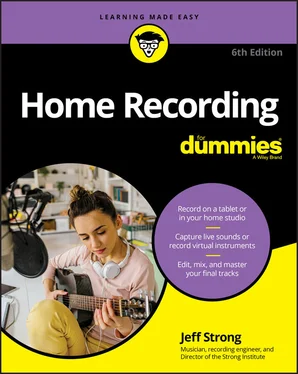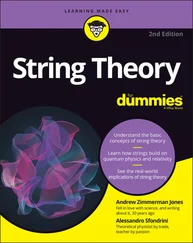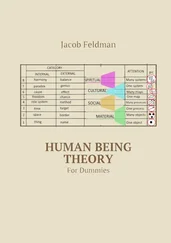After your songs are recorded and mixed, all that’s left to do is add the finishing touches. These include mastering your songs, putting them all on CD, and getting them out into the world through promotion.
Mastering is an often-misunderstood (and even unknown to many) part of the music production process that can make or break a CD (well, not literally). Mastering consists of several important steps that are intended to polish your songs so that they make up a complete collection on a CD, commonly referred to as an album. Here are the steps for mastering your songs:
1 Optimize the dynamics.The goal here is to get the dynamic levels within and between each song to their best. It also means making your music smooth (no sharp edge to the music) or punchy (a pronounced attack) — or something in between. Unfortunately, most people are concerned only with getting their CDs as loud as possible when performing this part of mastering. This isn’t a good idea, as you find out in Chapter 22.
2 Adjust the overall tonal balance.The point of this part of the mastering process is to create tonal continuity among all the songs on your CD. Because you probably recorded and mixed all your tunes over a period of months, each song may have slightly different tonal characteristics. This part of mastering is where you make all your songs consistent so that they sound like part of an album and not a bunch of disjointed tunes thrown together haphazardly.
3 Match the song-to-song volume.When your listeners play your CD, you don’t want them to have to adjust the volume of each song as it plays (unless they absolutely love a particular tune and want to turn it up, of course). The goal with this part of mastering is to get the volume of all the songs on a CD at pretty much the same level. This keeps one song from barely being heard while another threatens to blow the speakers.
4 Set the song sequence.How your songs are arranged on your CD helps tell your story. Think about how the order of each song on your album can make the most compelling musical statement. This part of the mastering process involves not only deciding what order everything should be in but also the steps you take to make it happen.
Putting your music out into the world
Formatting your finished and mastered songs for distribution and sales is one of the most exciting parts of the recording process. At last, you have a product, a complete musical statement that you can share with (or sell to) others. Like a lot of audio recording and production, the act of making distributable and saleable music is more involved than simply clicking the Burn button in your CD-recording program (at least if you want to make more than one copy) or uploading your music to a website.
In today’s largely digital world you have two basic distribution methods: streaming/downloadable music and physical CDs. As a throwback, more and more people are releasing music on vinyl records today.
Dealing with digital distribution
All music is now delivered, first and foremost, as a digital file. MP3 and AAC are the most popular formats. Depending on where your music goes, such as Spotify, Apple Music, or any of a myriad of other Internet music sites, you need to encode your music to meet the site’s requirements. It’s a pretty simple process, but one that’s closely tied to an area most musicians would rather not have to deal with: promotion. I cover this topic in Chapter 25.
For CD copying, you can either duplicate or replicate your CDs to make copies to give or sell to your fans. Here’s a quick rundown on the differences between these two approaches ( Chapter 23explains them in detail):
Duplication: Duplication consists of burning multiple CD-Rs from an audio file. Duplication requires very little setup, so it doesn’t cost much to make smaller quantities, such as 50 to 500 CDs.
Replication: The replication process starts with producing a glass master from your finished CD-R. This master CD is then used to create CDs using special CD presses, just like the major-label releases. Replication costs a bit more for setup, but the cost to create larger quantities of CDs is lower than that for duplication. This is a good choice for quantities of 500 or more.
Many indie musicians are also embracing vinyl as a medium for their music. There are several reasons, many of which relate to creating a more compelling product. It’s also worth mentioning that vinyl is much harder to pirate than a downloadable digital file. This is adding to appeal of vinyl records as a cost worth considering. I cover the details of making vinyl records in Chapter 23.
The final and most grueling step of recording and putting out a CD is the promotion process. This is where you either make it or break it as an independent artist. To help you along, I offer ideas and insights in Chapter 25.
Chapter 2
IN THIS CHAPTER
 Understanding your home recording needs
Understanding your home recording needs
 Taking a look at digital recorders
Taking a look at digital recorders
 Understanding analog studio equipment
Understanding analog studio equipment
 Exploring a few different recording systems
Exploring a few different recording systems
For many people, building a home studio is a gradual thing. You may start out with a synthesizer and a two-track recorder and add a microphone. Then you may decide to buy a multitrack recorder. Then you trade in your stereo speakers for real studio monitors. And before you know it, you’ve invested thousands of dollars in a first-rate home studio.
When setting up your home studio, you can go a couple of routes. You can walk into your local musical instrument store or pro audio shop without any forethought, buy the pieces of gear that catch your eye, and then figure out where you may use them in your studio. (Hey, don’t laugh — I’ve done this.) Or, you can determine your goals ahead of time and research each piece of equipment before you buy it to make sure it’s the best possible solution for you at the best price point. I recommend the latter approach because you end up with only the equipment you need and not a bunch of useless gear that may only ever look good sitting in your studio.
The process of choosing the right equipment doesn’t have to be difficult. All it takes is a little self-assessment and some basic knowledge about the different equipment options. This chapter helps you discover these things. Here you explore a few different system configurations and begin to understand what can work for your situation. You also become familiar with some of the many analog extras that so many people who favor digital recording want today.
 Digital recording technology is evolving at an incredible rate. As soon as the ink dries on this paper, the next best thing in recording gear may surpass much of the technology that I write about in this chapter. It’s tempting to always look to the next great innovation before you decide on a recording system, but I caution you against this wait-and-see attitude. Digital recording technology is now at the point that what you can record in your meager home studio can sound as fat, as clean, or as (insert your favorite recording adjective here) as the best recordings that have been released in the last 40 years.
Digital recording technology is evolving at an incredible rate. As soon as the ink dries on this paper, the next best thing in recording gear may surpass much of the technology that I write about in this chapter. It’s tempting to always look to the next great innovation before you decide on a recording system, but I caution you against this wait-and-see attitude. Digital recording technology is now at the point that what you can record in your meager home studio can sound as fat, as clean, or as (insert your favorite recording adjective here) as the best recordings that have been released in the last 40 years.
Читать дальше

 Understanding your home recording needs
Understanding your home recording needs Digital recording technology is evolving at an incredible rate. As soon as the ink dries on this paper, the next best thing in recording gear may surpass much of the technology that I write about in this chapter. It’s tempting to always look to the next great innovation before you decide on a recording system, but I caution you against this wait-and-see attitude. Digital recording technology is now at the point that what you can record in your meager home studio can sound as fat, as clean, or as (insert your favorite recording adjective here) as the best recordings that have been released in the last 40 years.
Digital recording technology is evolving at an incredible rate. As soon as the ink dries on this paper, the next best thing in recording gear may surpass much of the technology that I write about in this chapter. It’s tempting to always look to the next great innovation before you decide on a recording system, but I caution you against this wait-and-see attitude. Digital recording technology is now at the point that what you can record in your meager home studio can sound as fat, as clean, or as (insert your favorite recording adjective here) as the best recordings that have been released in the last 40 years.










